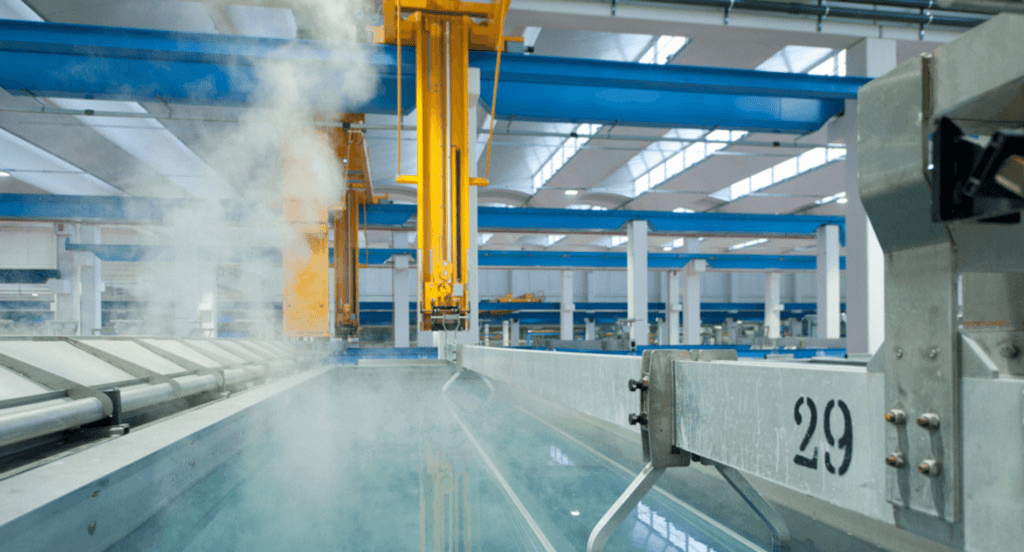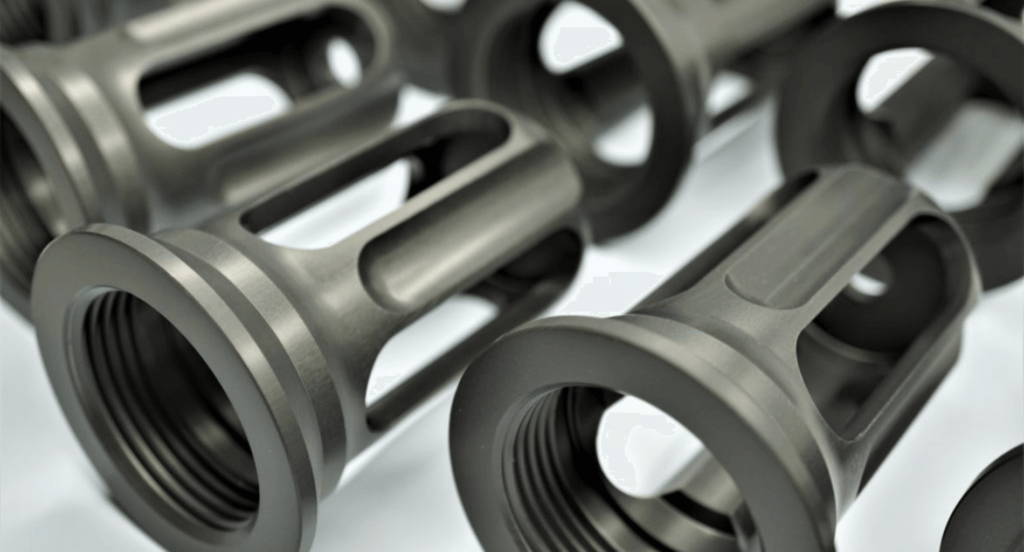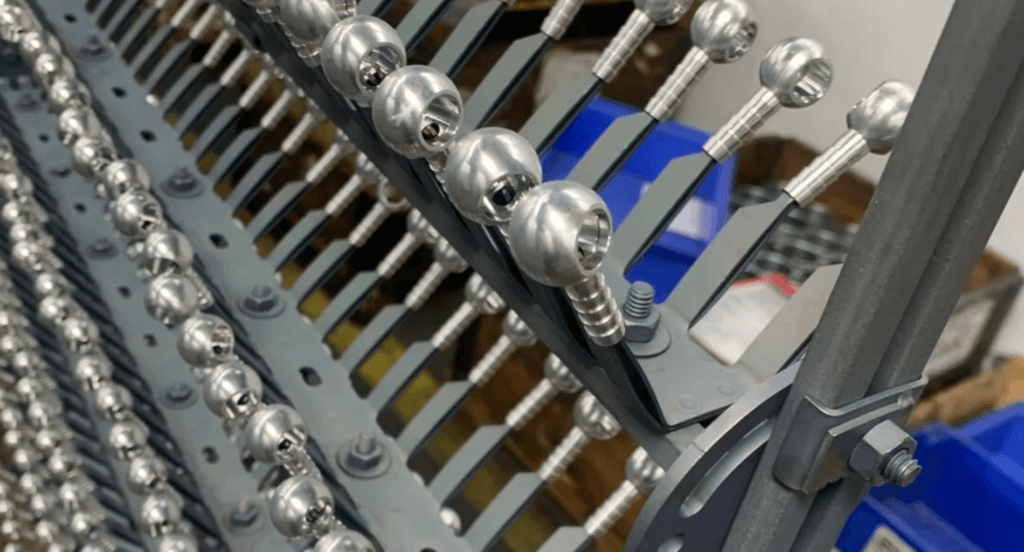Is your business seeking a competitive edge in durability and aesthetics for metal components? Discover hard anodizing, the transformative process that’s reshaping industry standards for aluminum parts.
With years of experience in the metal fabrication industry, I’ve seen firsthand the transformative power of fabrication process that elevates the entire manufacturing standard. Trust me, understanding and utilizing this process can make a significant difference in your production line.
Hard anodizing is more than just a surface treatment; it’s a commitment to quality and longevity. When done correctly, it can change the way you think about and use aluminum components.
Whether you’re a seasoned professional or new to the field, this guide will delve into the fundamentals of hard anodizing, explore its benefits and valuable characteristics. Essential for your comprehensive understanding of hard anodizing and its impact in today’s advancement.
So, read on to uncover this treatment.
1. The Science Behind Hard Anodizing
Hard anodizing is a fascinating electrochemical process that transforms the surface of aluminum alloys into a durable and corrosion-resistant layer. At its core, this process involves submerging aluminum parts in a sulfuric acid bath and passing an electric current through it. This method thickens the natural oxide layer, typically to a depth ranging from 25 to 150 micrometers, significantly enhancing the metal’s wear resistance.
The beauty of hard anodizing lies in its precise control over thickness and hardness. By adjusting variables like temperature, acid concentration, and electrical current, you can tailor the anodic coating to meet specific requirements. This controlled oxidation results in a layer that is integrated with the aluminum substrate, ensuring a bond that is as durable as it is protective.

2. Advantages of Hard Anodizing
Building on the scientific foundation of hard anodizing, it’s clear that this process offers a multitude of benefits. Here are the key advantages that make hard anodizing a valuable asset in metal fabrication:
Enhanced Durability
Hard anodizing significantly increases the lifespan of aluminum components. The process creates a thick, hard layer that is integrated with the aluminum substrate, making it resistant to wear and tear. This means parts can withstand more rigorous use and harsher conditions, reducing the need for frequent replacements and repairs.
Improved Corrosion Resistance
The anodic layer formed during hard anodizing is highly resistant to corrosion. This protective barrier is especially beneficial in environments where parts are exposed to corrosive substances or extreme weather conditions. By preventing oxidation and other chemical reactions, hard anodizing ensures that components maintain their integrity and functionality over time.
Aesthetic and Functional Versatility
Hard anodized parts aren’t just strong; they’re also aesthetically pleasing and can be dyed in a variety of colors for easy identification or branding purposes. The process also improves the adhesion of paints and other coatings. Whether you’re looking for a sleek, professional finish or a specific color coding for parts, hard anodizing offers both beauty and practicality.
3. Properties of Hard Anodized Surfaces
Transitioning from the advantages of hard anodizing, it’s essential to understand the distinctive properties of hard anodized surfaces that make these benefits possible. Here’s a closer look at the characteristics:
Increased Hardness and Wear Resistance
One of the most notable properties of hard anodized surfaces is their remarkable hardness. Ranking just below diamonds on the Mohs scale, the anodized layer provides exceptional wear resistance. This means that components are less susceptible to scratches, dents, and general wear, making them ideal for high-stress applications where durability is crucial.

Thermal Insulation
Hard anodized surfaces offer excellent thermal insulation properties. The anodic layer acts as a barrier, reducing heat transfer to or from the aluminum substrate. This is particularly beneficial in applications where components are exposed to extreme temperatures or where maintaining a specific temperature is vital for the operation or integrity of the part.
Electrical Insulation
In addition to thermal insulation, hard anodized aluminum provides excellent electrical insulation. The anodized layer has a high electrical resistance, making it an ideal surface for components that require electrical isolation. This property is particularly valuable in the electrical and electronics industries, where preventing unintended electrical pathways is crucial for safety and performance.
4. Design Considerations in Hard Anodizing
Reflecting on the unique properties of hard anodized surfaces, it becomes clear that certain design considerations are vital for maximizing the process’s effectiveness. Here are the key aspects you should consider:
Select the Right Aluminum Alloy
The choice of aluminum alloy is critical. According to Data Bridge Market Research, aluminum alloy is expected to grow a CAGR of 4.96% in 2023 to 2030. With this surge make sure to opt for alloys like 6061 or 7075, known for their excellent response to hard anodizing. These alloys ensure a uniform and durable anodic layer. Avoid alloys with high levels of silicon or copper, as these can lead to reduced coating quality.

Account for Dimensional Changes
Hard anodizing adds thickness to your components, typically around 0.05 mm on each side. Design your parts with these dimensional changes in mind to maintain tight tolerances. Ensure that post-anodizing dimensions align with the assembly or application requirements, considering the added layer’s impact on fit and function.
Simplify Design for Uniform Coating
Complex designs with deep recesses, sharp internal corners, or intricate details can lead to uneven coating and reduced performance. Simplify your designs where possible, aiming for smooth, rounded internal corners and easily accessible surfaces. This approach promotes uniform coating thickness and optimal anodizing results, ensuring your components perform as intended.
5. Applications of Hard Anodizing in Various Industries
Following the design considerations in hard anodizing, it’s evident that this process has a wide array of applications across various industries. Here are the sectors that leverage hard anodizing:
Aerospace and Aviation
In the aerospace and aviation industry, hard anodizing is used to improve the wear resistance and durability of components subject to extreme conditions. Parts like landing gear, hydraulic pistons, and valve bodies benefit from the increased hardness and reduced friction provided by the anodized layer. This process ensures that components can withstand the high stresses and corrosive environments encountered in aviation.

Automotive Sector
The automotive industry relies on hard anodizing for components that require both aesthetic appeal and functional durability. For example, engine parts, suspension components, and gearboxes are often treated to increase their wear resistance and thermal insulation. This treatment extends the life of parts in a sector where reliability and performance are paramount.

Medical Equipment
Hard anodizing plays a crucial role in the medical field by enhancing the durability and biocompatibility of equipment. Surgical tools, implants, and diagnostic devices benefit from the corrosion-resistant and non-toxic surface that anodizing provides. This ensures that medical instruments can withstand repeated sterilization processes and maintain their integrity over prolonged use.
6. Hard Anodizing vs. Other Surface Treatments
After exploring the wide applications of hard anodizing in various industries, it’s valuable to compare it with other surface treatments to understand its unique position. Below is a table that contrasts hard anodizing with other common metal treatments:
| Surface Treatment | Description | Pros | Cons |
| Hard Anodizing | Hard anodizing involves an electrochemical process that creates a thick, hard oxide layer on the surface of aluminum alloys. | Offers excellent wear and corrosion resistance, enhances durability, and can be dyed for aesthetic purposes. | More costly and limited to certain aluminum alloys; the process is also more complex than standard anodizing. |
| Standard Anodizing | Standard anodizing also creates an oxide layer but is thinner and less durable than hard anodizing. | Less expensive and can be applied to a wider range of aluminum alloys; provides good corrosion resistance. | Not as wear-resistant as hard anodizing and doesn’t significantly increase surface hardness. |
| Powder Coating | A dry powder is electrostatically applied and then cured under heat to form a skin-like coating. | Offers a wide range of colors, good surface finish, and decent durability; environmentally friendly process. | Less resistant to harsh chemicals and wear compared to hard anodizing; can be more susceptible to chipping. |
| Electroplating | A metal, such as chrome or zinc, is deposited on the surface of the part through an electrochemical process. | Provides excellent wear resistance and can significantly improve appearance. | Can be less environmentally friendly; the process may not provide uniform coating on complex geometries. |
While hard anodizing is a superior choice for applications requiring maximum durability and corrosion resistance, other surface treatments shown above also have their own set of advantages and suitable applications. The choice between these options depends on the specific requirements of the project. But surprisingly, hard anodizing stands out for its exceptional performance in demanding applications.
7. Quality Control and Standards in Hard Anodizing
Following the comparison between hard anodizing and other surface treatments, it’s crucial to understand the rigorous quality control and standards that govern hard anodizing to ensure superior results. Let’s explore this section below:
Adherence to Industry Standards
Hard anodizing processes are governed by specific industry standards, such as MIL-A-8625 in the United States, which define the properties and quality criteria of the anodized coating. Adhering to these standards ensures consistency and compliance with safety regulations. Zemetal regularly audits their processes and maintains certifications to guarantee that their hard anodizing services meet these rigorous specifications.
Inspection and Testing Methods
Quality control in hard anodizing involves a series of inspections and tests to verify the hardness and overall integrity of the anodic layer. For instance, techniques like caliper measurements and microhardness testing are commonly employed. These methods provide quantitative data to assess whether the anodized components meet the required performance criteria and are crucial for maintaining high-quality outcomes.
Continuous Process Monitoring
Maintaining high-quality hard anodized surfaces requires continuous monitoring of the anodizing process. Parameters such as bath temperature, electrical current, and acid concentration must be closely controlled and recorded. By implementing strict process controls and regular maintenance schedules, Zemetal effectively minimizes variations and defects, leading to a more reliable anodizing services and outcome.
8. Challenges and Limitations of Hard Anodizing
As we delve into stringent quality control and standards in hard anodizing, it’s equally important to address the challenges and limitations inherent to this process. Here are the circumstances that you should be prepared for:
Alloy Restrictions
Not all aluminum alloys are suitable for hard anodizing. Some alloys, particularly those with high copper or silicon content, can yield inconsistent or poor-quality coatings. This limitation means that manufacturers must carefully select materials and may face restrictions in their design and material choices. Understanding and navigating these alloy restrictions is crucial for ensuring a successful and high-quality anodizing outcome.
Thickness and Dimensional Tolerances
Achieving the desired thickness without compromising dimensional tolerances presents a significant challenge. The added layer from hard anodizing can affect the fit and function of components, especially in assemblies with tight tolerances. Consider a precise control in the anodizing process and account for the increased dimensions in their design, which can add complexity and potential for error.
Environmental and Safety Concerns
Hard anodizing involves the use of strong acids and high-voltage electrical currents, raising environmental and safety concerns. Proper handling, disposal of chemicals, and adherence to safety regulations are essential but can also be challenging and costly. Providers must invest in proper safety equipment, training, and waste treatment facilities, which can increase the overall cost and complexity of the anodizing process.

9. 3 Factors When Considering Hard Anodizing Services
Following the discussions of challenges and limitations in hard anodizing, it’s vital for businesses to explore several factors when considering hard anodizing services. Here are the following:
#1 Quality of the Anodizing Process
When considering hard anodizing services, the quality of the final anodic coating are paramount. High-quality anodizing increases resistance to corrosion and wear, thereby extending the lifespan of the metal component. It’s essential to assess the service provider’s adherence to industry standards and their track record for producing durable, high-quality finishes.
#2 Specification Capabilities
Understanding the specification capabilities of the hard anodizing service provider is crucial. They should offer a range of thicknesses and hardness levels to suit different applications. The ability to deal with aspects such as color, finish, and sealing is also important for aesthetic requirements. A service that can tailor the anodizing process to your specific needs will likely deliver a more effective product.
#3 Cost and Turnaround Time
Cost is a significant factor when selecting hard anodizing services. It’s important to compare the pricing of different providers, but also consider what’s included in that cost, such as pre and post treatment, and quality assurance processes. Equally important is turnaround time; a faster process might be more desirable for urgent projects. Remember that balancing cost with quality and speed requires careful consideration.
Conclusion
Hard anodizing stands as a testament to enhancing durability and performance in metal fabrication. This guide has equipped you with the knowledge to harness its full potential, elevating your manufacturing processes and product quality.
For businesses eager to explore the benefits of hard anodizing further, Zemetal is your trusted partner. Dive deeper into its possibilities with us and contact us today to transform your operations.
Dive Deeper Into Our Resources
Looking for more diverse service options? Browse through our handpicked selections:
For some insightful reads, we’ve curated a list of recommended articles just for you:
Still haven’t found what you’re looking for? Don’t hesitate to contact us. We’re available around the clock to assist you.








